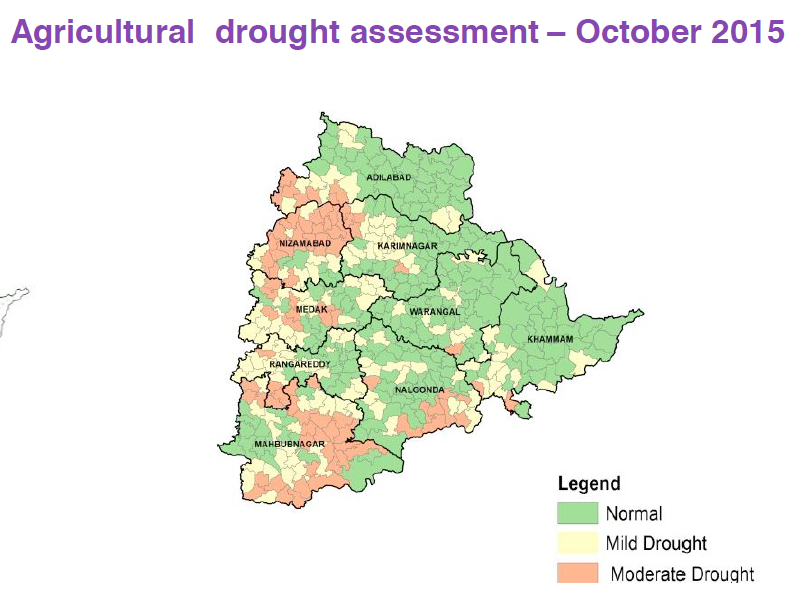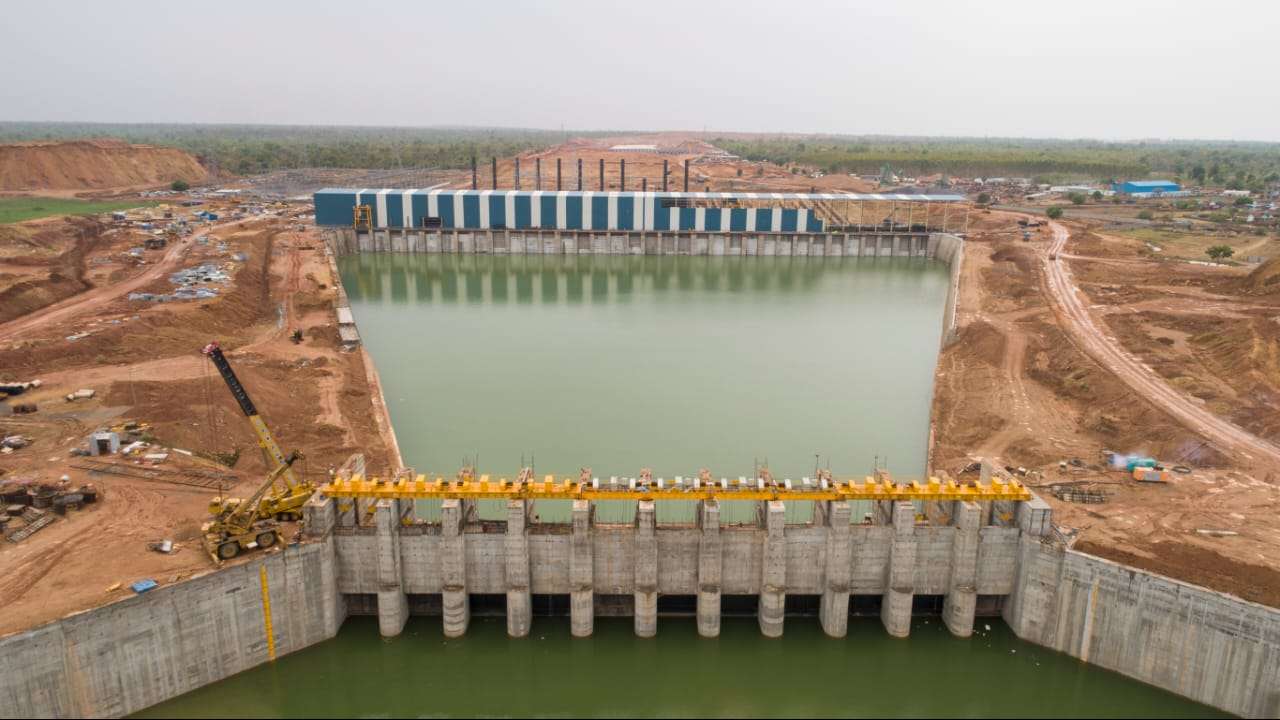“Lifting A river” is a recently released documentary on Discovery Channel, describing the multi-purpose Kaleshwaram Lift Irrigation Project (KLIP) that is majorly aiming to relieve the farmers in Telangana.
The documentary, made over three years, captures every aspect of the project, ranging from marvelous domestic and international engineering to the challenging underground work to lay deepest and widest pipes as possible.
It is named so because the project seeks to divert the waters of Godavari River towards the dry agrarian lands in South. But here’s how it will be different, defying Earth’s gravity, these waters will travel from low flowing levels to highland areas in the state.
Engineering related to the project:
Basic prospecting was done using a highly advanced Light Detection and Ranging (LiDAR) survey to collate and analyze data related to the availability of water at different locations along the course of the Godavari and its tributaries.
Much of the work has been done by commissioning huge pumping machines built at BHEL Bhopal, at multiple levels nearly 600 meters above sea level.
The Godavari water brought to upper lands is then stored in reservoirs and canals after traveling in pipes i.e. two TMCs of water per day and has so far, managed to recharge lakes and ponds.
These pipes compose the longest tunnel to carry water in Asia i.e. 81 kms between the Yellampally barrage and the Mallannasagar reservoir.
The Telangana Chief Minister K Chandrashekar Rao’s dream project has been recently inaugurated and has been implemented by Megha Engineering & Infrastructures Limited (MEIL) with insights from Experts worldwide.
15 gigantic pumping stations, 1531 km Gravity Canals, 203 km Tunnels, 20 Reservoirs and 104 pumps with a cumulative pumping capacity of 5,159 MW.
Of this, 4,439 MW has been installed by MEIL, establishing a record to have never been built anywhere else in the world.
Even the capacity of a single unit (7 units alone in an underground pumping station) is 139 MW, being considered the biggest ever in world.
Till now, the biggest lift projects in the world had been the Colorado lift scheme in USA and the Great Manmade River in Egypt. These schemes hold their capacities in horsepower and took over three decades in completion.
KILP has set another record to be the world’s biggest project of its kind, completed in the shortest known time.
The Kaleshwaram lift irrigation project, an off-shoot of the earlier Pranahitha-Chevella Lift Irrigation Scheme introduced in 2007 when Andhra Pradesh was undivided, was later restructured because of many impending environmental difficulties and provision for very low water storage i.e. 16.5 tmc ft only.
With the ultimate engineering, it has now taken over to be the world’s biggest project in terms of capacities.
Why was there an impressing need for such a multi-stage, multi-purpose project?
Severe life-threatening droughts are common in the area. People do not have enough water to drink or irrigate their lands for food. To explain, we have a case in point.
In 2015 alone, Telangana had to declare drought in 7 out of 10 of its districts, 231 out of 443 rural mandals (blocks) turned out to be drought-affected in the State and therefore, a staggering 1000 crore were requested from the Centre for help.

According to SANDRP (South Asia Network on Dams, Rivers and People): “In Jun – Sept 2015 monsoon, 216 of 459 mandals in Telangana recorded scanty rainfall.”
It was in the beginning of drought that over 50 per cent of the rain-fed crops got affected severely, shattering any investment made by farmers for cultivation.
“According to IMD, rain in June 1 – Sept 30 period was 20% deficit in Telangana. Around end of June 2015, Telangana received good rain, but then it dried up.”
Before the onset of these consecutive droughts, farmers in the area used to raise three crops a year of which paddy, maize and chilli were the main crops, without any irrigation problem. But due to lack of rainfall, Godavari has totally dried, first time in half a century.
People nearby had been experiencing heat-strokes and even deaths from it. And the migratory birds eg Pelicans, earlier visiting the area while traversing the subcontinent, are now rare sight or barely seen ever.
During 2015 alone, the groundwater levels in the state even plummeted by 2.78 metres, drying existing borewells and tanks. With more people desperately relying on the shrinking groundwater in the area, even the new borewells are sinking.
To provide some relief from dwindling incomes in the region, Government provided every household with an average 50.34 number of days of work under MGNREGS.
At times, proper steps by administration are needed too like declaring drought early before farmer suicides or crop failure, but these measures can only assuage the prevailing condition for a brief moment, what we need is a permanent or at least, long-term solution.
The project will look forward to irrigate 45 lakh acres of farmlands for two crops per year, fulfil the drinking water needs of 70 percent state population-area of 40 TMC and further domestic industry uses requiring 16 TMC water.
The reservoirs under KILP have the storage of about 148 tmc ft which can further utilize 180 tmc ft by lifting at least 2 tmc ft water every day for prevailing 90 flood days in the districts of Karimnagar, Nizamabad, Warangal, Medak, Nalgonda and Ranga Reddy.
Additionally, it will upgrade the socio-economic profile of Telangana including development of fisheries, facilitate inland waterways, tourism, and biodiversity.
Expanding capacities: Initially 4,992 MW of electricity will be needed to pump 2 TMC of water every day as desired in the first phase. The requirement will ascend to reach up to 7,152 MW for lifting 3 TMC water from next year.
Controversies around the Project:
On a petition filed by a farmer from Siddipet district whose land got affected by the project in 2020, NGT has asked the Telangana government to halt the works, keeping the drinking water supply component intact.
NGT has found that environmental clearances needed to be undertaken before the project, were given after the project had already begun by the Telangana government and therefore, MOEFCC was asked to investigate into the matter.
It shall be any government’s top concern to save the drowning sustainability, if looking for future greater good of the region. Environmental laws are afterall made to save human lives from probable Nature’s afflictions.
There have been other prevailing ecological problems against the sustainability in the area. Algal blooms resulting from Pollution, high alkalinity along the stretches of Pochampadu dam, high pH from ash run-off, bauxite or other alkali salts saturate the river basin.
Frequent floods in tail end area of Godavari and excessive siltation in reservoirs due to deforestation and mining activities in the region are known already. These may be exacerbated by the constant construction in addition to the degrading air quality to breathe in and induced seismicity by this huge human involvement at gravity.
Land acquisitions and rehabilitation of livelihoods is another social concern altogether.
“The clearances require data pertaining to the three seasons, spanning over nine months and we have initiated the work to obtain the data,” according to an official but they were sore on following “outdated” rules delaying the implementation of the project.
But land and other forces of Nature are known to retaliate when we complete our desires along the face of our immediate surroundings. We hope that this engineering marvel is well taken by the river and Nature as expected and there are least ecological abruptions.
Climate change is constantly spinning its wheel and is working in tandem with Human aspirations. Upcoming time will see more disturbed rainfall patterns, more dry conditions, more shrinking rivers while a few work to correct the wrongs done by an entire race.
With Kaleshwaram project, surely the advantages are apparently outweighing any expected controversies surrounding the project. The legitimate needs of humans are anyhow important to be addressed for taking better care of Nature.



